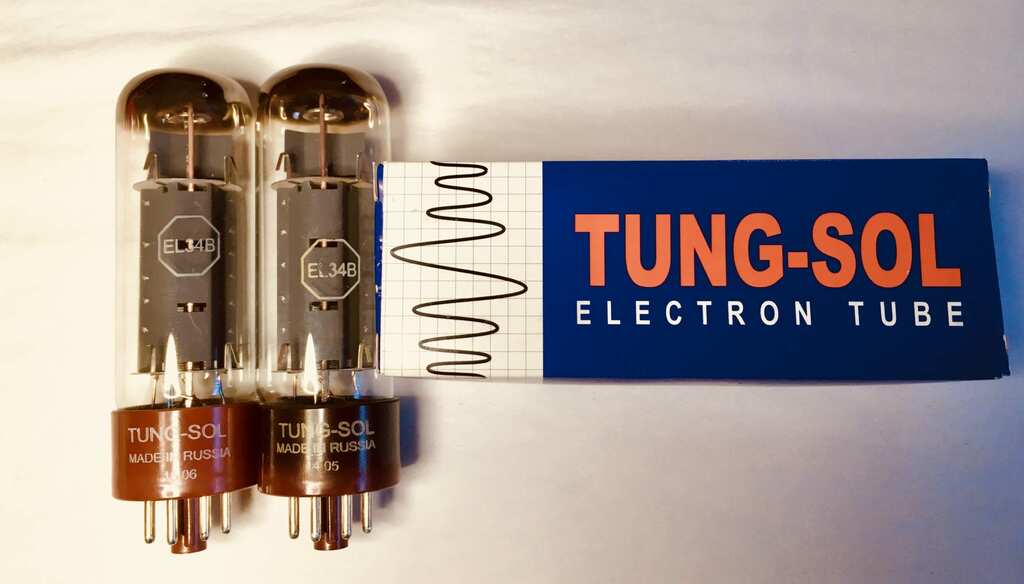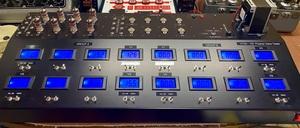I was repairing a Bugera 333 amp which was really badly crackling. Taking the back off the amp revealed cooked EL34’s.
This is a 120 watt combo amp. A gigging amp will be used at higher volume settings and so the output valves get worked hard. In a high power combo amp the valves are exposed to a lot of vibration from the cabinet. This is exactly what they dont like.
This amp can use 6L6’s or EL34’s . You put a little switch on the back to either the 6L6 or EL34 position. Note that the amp is 120 watts with 6L6’s or 100 watts with EL34’s
These amps have four red LED’s on the back panel which are meant to show you when one of the output valves is a dud. They are best ignored and use your ears. These LEDS said the ouptut valves were fine but they were totally shot to pieces.
In the marketing blurb they tell you their circuitry means you don’t need to use matched valves. HOWEVER, in the “service personnel” notes it advises to use a set of matched output valves.
There is also a claim that the novel circuitry can make the output valves last up to twenty times longer. They are saying that the output valves can last up to 25 years ( normal life up to 2 years). The big issue with this claim is that the vibration from a powerful combo amp such as this will shake the internals of the output valves to pieces long before the “special” cirrcutry can do anything to enhance the life. This amp is a good case in point
Even if you have no technical ability, no valve testers, you can diagnose when the output valves need changed.
First thing is have a good look at them. See the main picture. It is not hard to see which is the used one. The base is blackened with all the heat. This Bugera amp had four Tung SOl El34B’s fitted and these are superb for a rock amp.
Your ears are another great piece of valve amp test equipment.
Old output valves tend to go dull sounding. They also start to crackle at random and sometimes badly break up when a note is played. A good test is to get a pencil and gently tap them. If you hear loud thumps and bangs then there is a problem!
Another good test is to remove the valves ( make sure you don’t get burned !! ) and hold them to your ear. Gently tap them and they should nice and clear with a metallic ring. With worn valves you will hear the sound of loose stuff flapping around. This means its time to have a look at our nice range of output valves 🙂
Make sure you check and adjust the bias on your amp. Bugera put a handy test point on the back panel along with access to the bias adjustment point. The only downside is that it gets accidentally moved. It is easy to use. Just set your multimeter to the milli-volts range and read the number on the multi-meter as the mA. When you get new valves from us we provide a table of suggested bias settings for your valves.
This sound is the electrodes in the valve moving around as they have worked loose. This is just a rough test . The best thing is to put them on a valve tester. When you tap them you see the anode current jumping around.
In this particular Bugera 333 amp, it sounded crisp and ready for the next gig.
Using Your Ears to Test Your Output Valves and Bugera 333 info


